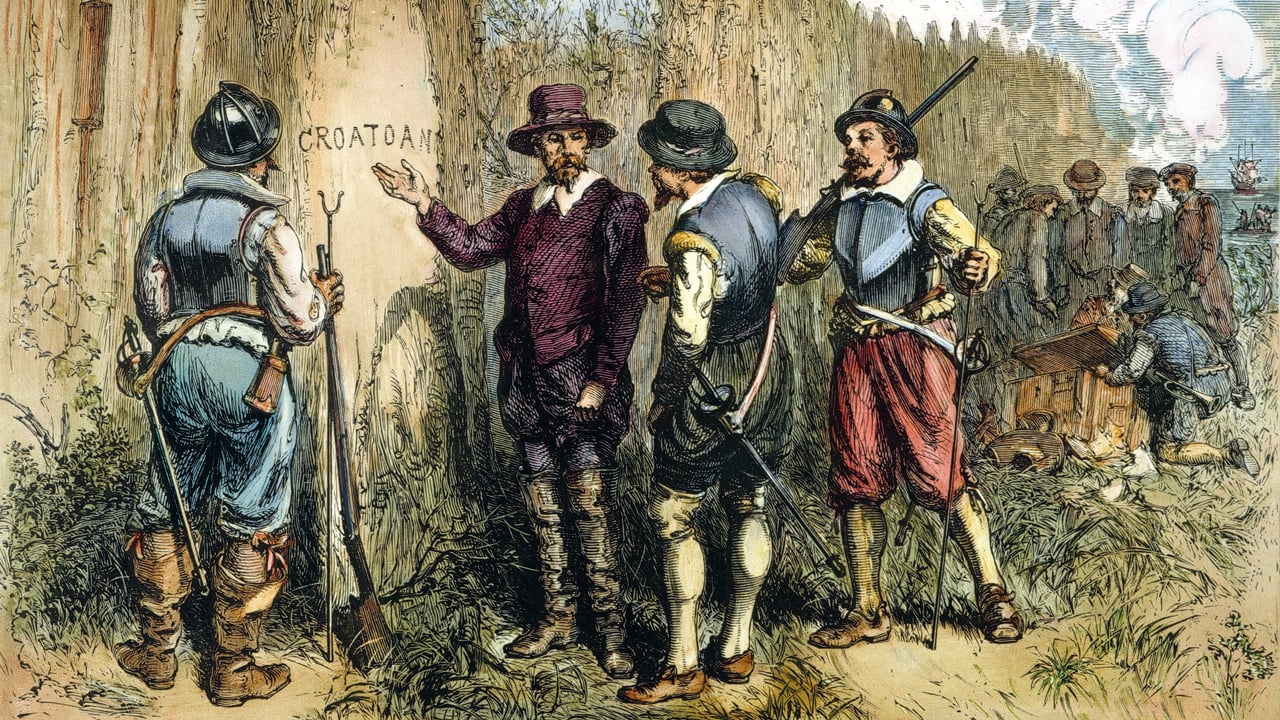After more than 400 years of unanswered questions, experts may finally be closing in on the truth behind one of America’s greatest enigmas — the mysterious disappearance of the Roanoke Colony. In a stunning breakthrough that could rewrite history, archaeologists have unearthed extraordinary new evidence that sheds light on what really happened to the settlers who vanished without a trace in the late 1500s.
A team working on Hatteras Island, North Carolina, has uncovered a remarkable collection of artifacts — including iron flakes, fragments of European pottery, and even the hilt of a rapier — that suggest the Roanoke colonists didn’t vanish at all. Instead, new findings point to a shocking yet hopeful twist: the settlers may have assimilated with the Croatan tribe, forging a fragile alliance to survive the brutal realities of the New World./https://tf-cmsv2-smithsonianmag-media.s3.amazonaws.com/filer/98/33/98333440-42a6-4a81-a029-b17874d9f695/g169m6.jpg)
Researchers discovered hammer scale, a byproduct of blacksmithing, buried deep within Croatan settlement layers — undeniable proof that European metalwork took place there. This suggests the colonists, facing starvation and drought, may have abandoned their fort, taken their tools, and integrated into native communities. What was once seen as a story of disappearance is now emerging as a tale of adaptation, resilience, and survival against impossible odds.
Scientific evidence backs this up: tree-ring analysis reveals that between 1587 and 1589, the region suffered one of the worst droughts in 800 years, devastating crops and driving the settlers to desperation. When John White — the colony’s governor — returned in 1590, he found the settlement deserted but intact, with the word “Croatan” carved into a post. There were no signs of struggle, no burned buildings, no mass graves. It was as if the colonists had simply walked away.
For centuries, theories have abounded: some claimed the settlers fled inland, others that they tried to sail back to England — only to perish at sea. But none of those stories fit the evidence now surfacing. The new archaeological record instead points to a slow merging of lives and cultures, as European and Indigenous people learned to depend on one another for survival.
Adding to the mystery are the infamous Dare Stones, discovered in the 1930s — carved with haunting messages allegedly from the colonists, describing their suffering and travels. Though some historians dismiss them as forgeries, others believe they may contain fragments of truth, hinting that Roanoke’s settlers endured longer than anyone imagined.
Could this mean that the “lost colony” never truly vanished, but instead became part of America’s first blended culture — hidden in plain sight for centuries?
While the final pieces of the puzzle remain elusive, these revelations are reshaping how historians view early colonization. The story of Roanoke is evolving from one of tragedy to one of transformation — a testament to human adaptability in the face of collapse.
As excavations continue and new technologies like DNA analysis and soil forensics come into play, the ghosts of Roanoke may yet speak. For now, the message carved into that weathered post over 400 years ago still haunts America’s imagination — a single, tantalizing word: “Croatan.”





